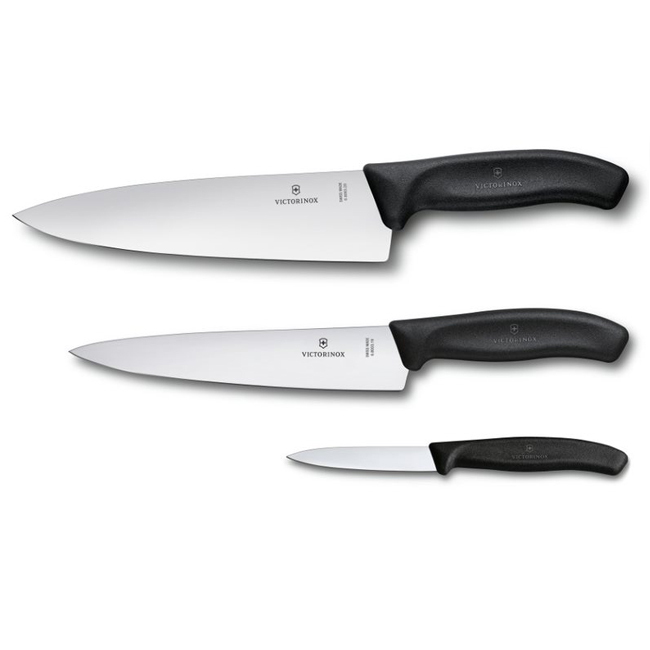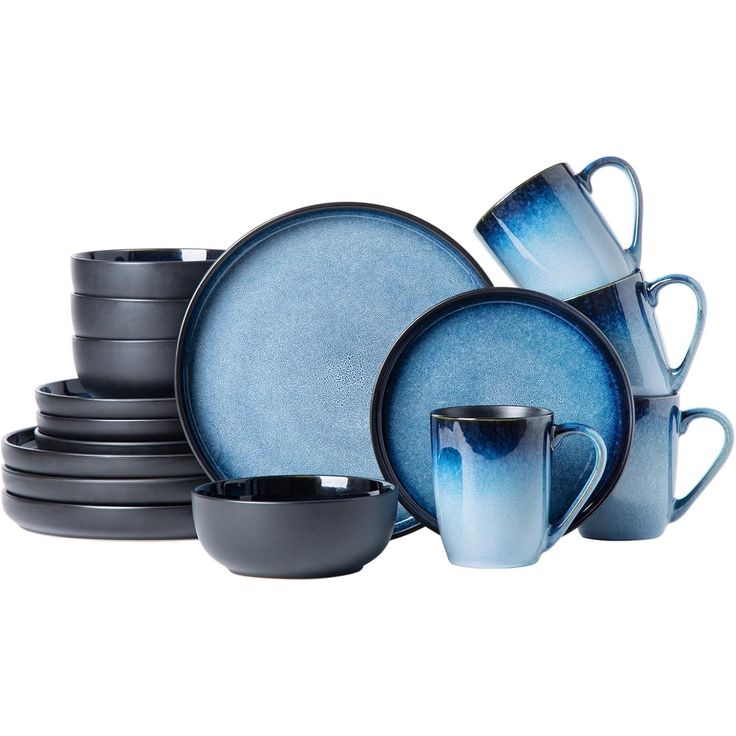In the culinary world, the tools you use can significantly impact your cooking experience. The kitchen knife block set serves as a focal point in many kitchens, not only for its functionality but also for its aesthetic appeal. With a myriad of options available, choosing the right knife block set becomes crucial for culinary enthusiasts, whether you are a seasoned chef or a novice cook. This article provides insights into how to select the ideal kitchen knife block set that complements your style, enhances your culinary skills, and meets your specific needs.
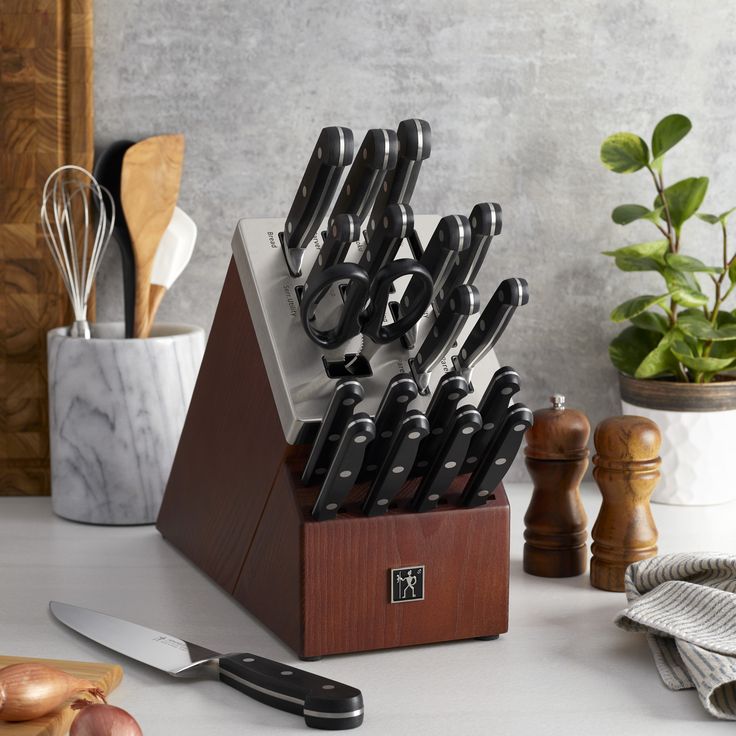
Understanding the Importance of a Kitchen Knife Block Set
A kitchen knife block set acts as more than just a collection of knives; it serves as an organized system designed to keep your blades safe, secure, and easily accessible. Proper knife storage is essential for maintaining the longevity and sharpness of your knives. Without a designated home, knives can become dull, nicked, or damaged when tossed in a drawer or left on the countertop.
Additionally, a knife block set contributes to kitchen organization. With designated slots for each knife, the risk of injury decreases as you avoid scrambles through a cluttered drawer. An organized knife block simplifies your cooking process, allowing you to focus on preparing exquisite dishes rather than searching for the tools you need. As you consider different knife block sets, remember that choosing the right one can significantly influence your efficiency and overall enjoyment in the kitchen.
In terms of aesthetics, a beautifully crafted knife block adds an element of sophistication to your kitchen decor. Many knife blocks come in various materials, colors, and designs, allowing you to choose one that reflects your personal style. This blend of functionality and visual appeal forms the essence of the culinary experience—after all, cooking is an art, and your tools should elevate that artistry.
Types of Knife Block Sets: A Comprehensive Overview
When shopping for a kitchen knife block set, you will encounter various types designed to suit different preferences and cooking styles. The most common options include traditional wooden blocks, magnetic knife holders, and more modern designs made from stainless steel or acrylic. Understanding the pros and cons of each type will help you narrow down your choices.
Traditional Wooden Knife Blocks
Wooden knife blocks provide a classic, timeless appeal. They often feature designated slots for each knife, making it easy to find what you need quickly. Wood also offers some resistance to bacteria, making it a hygienic choice. However, ensure you maintain the block properly, as wood can warp or crack if exposed to moisture over time.
Magnetic Knife Holders
For those who favor a more contemporary approach, magnetic knife holders offer an elegant alternative. These bars attach to the wall or a refrigerator, allowing you to showcase your knives while keeping them within arm’s reach. They also create a modern look and free up counter space. Though visually stunning, ensure you protect your knives from potential chipping against hard surfaces during removal and placement.
Stainless Steel and Acrylic Knife Blocks
Stainless steel and acrylic knife blocks often feature sleek designs that complement modern kitchen aesthetics. They generally include clear sections, allowing you to view your knife collection without having to sort through them. Many users appreciate these materials for their durability and ease of cleaning. However, keep in mind that metal can dull blades faster than wood.
Budget vs. Premium Knife Sets
Finally, consider the budget you want to allocate for a kitchen knife block set. Entry-level sets typically provide basic functionality for novice cooks. However, investing in a premium set might afford you better quality materials, sharper edges, and superior handling for the more serious culinary enthusiast. Evaluate your cooking habits to determine which option aligns with your needs.
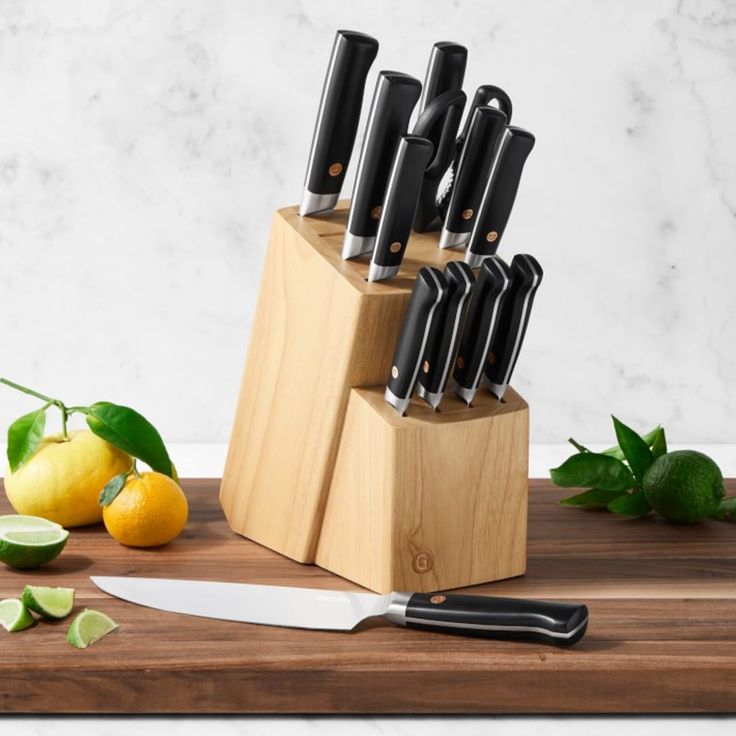
Key Knives to Include in Your Set
When selecting a kitchen knife block set, it’s essential to consider which knives you will use most frequently. A typical set includes a chef’s knife, a paring knife, a serrated knife, and a utility knife. Understanding the purpose of each will help you recognize the importance of having a balanced collection.
Chef’s Knife
The chef’s knife is often referred to as the workhorse of the kitchen. Its large, versatile blade handles a variety of tasks, from chopping vegetables to slicing meat. Look for a chef’s knife that feels comfortable in your hand and allows you to maintain control while working.
Paring Knife
The paring knife is ideal for more delicate tasks, such as peeling fruits and intricate slicing. This small knife provides precision and control, which is crucial when dealing with smaller quantities or intricate ingredients.
Serrated Knife
A serrated knife is essential for cutting breads and pastries without crushing them. The teeth on the blade allow for easy slicing through crusts or hardened surfaces while maintaining the integrity of the food inside.
Utility Knife
The utility knife serves as a versatile tool for everyday cutting tasks. It combines elements of the chef’s and paring knives and is perfect for slicing sandwiches or cheese. Having a utility knife in your block set expands your cooking capabilities significantly.
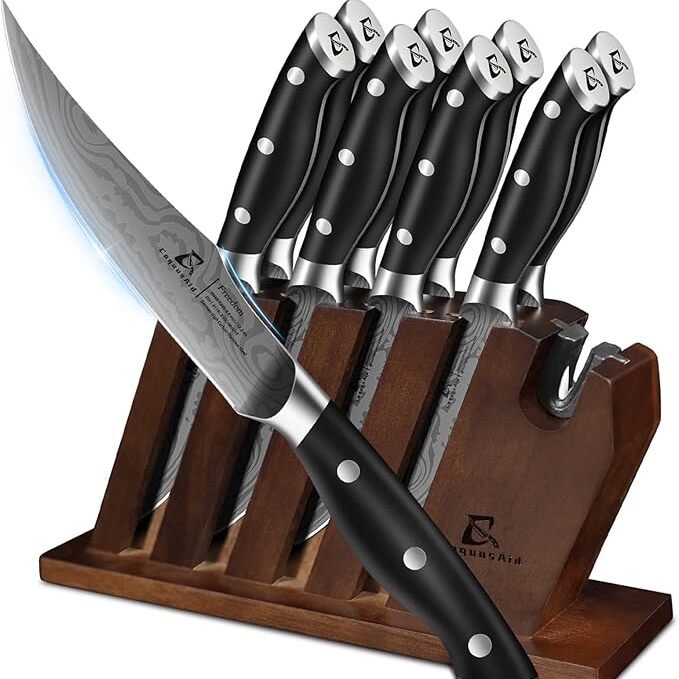
Material Choices: Making an Informed Decision
The materials used in both the knives and the block itself play a critical role in the overall functionality and longevity of the kitchen knife set. Understanding these materials helps you make an informed choice that aligns with your cooking style.
Knife Blades
Most kitchen knives feature blades made from high-carbon stainless steel or ceramic. High-carbon stainless steel offers durability and a sharp edge, making it a popular choice among professional chefs. Ceramic blades are lightweight and resist rust but can chip more easily. Understanding the differences allows you to choose based on how you intend to use your knives.
Knife Handles
The handle is just as important as the blade, affecting comfort and control. Common handle materials include wood, plastic, and composite materials. Wooden handles provide a classic feel and often have excellent ergonomic qualities. Plastic handles tend to be lighter, more affordable, and available in a variety of colors. Composite materials offer the best of both worlds, combining durability and aesthetics.
Knife Block Material
The knife block should complement the quality of the knives. Wooden blocks are generally favored for traditional appearances and protection for the blades. Stainless steel blocks, while modern, may not provide the same level of safety for blade edges. Evaluate your aesthetic preferences when selecting the block material.
Choosing the Right Size: Finding Your Perfect Fit
The size of your kitchen knife block set matters. Evaluate your kitchen space and the specific formulas to find a set that fits your needs without overcrowding your countertops.
Standard Sizes
Kitchen knife block sets typically range from four to sixteen pieces. A smaller set may include just the essential knives, while a more extensive collection offers specialized tools for various culinary tasks. If you’re limited on space, consider a smaller set that includes multipurpose knives to handle multiple tasks.
Consider Your Cooking Style
Consider how often you cook and the types of meals you prepare. If you often tackle complex recipes, a larger set with specialty knives becomes beneficial. However, for those who cook casually or prepare simple meals, a more compact set suffices.
Counter Space and Organization
Beyond size, think about how the set fits within your kitchen’s organization. Ensure that the block or storage solution does not clutter your counters, hindering your cooking experience. Evaluate kitchen ergonomics to ensure you can easily access your knives while preparing meals.
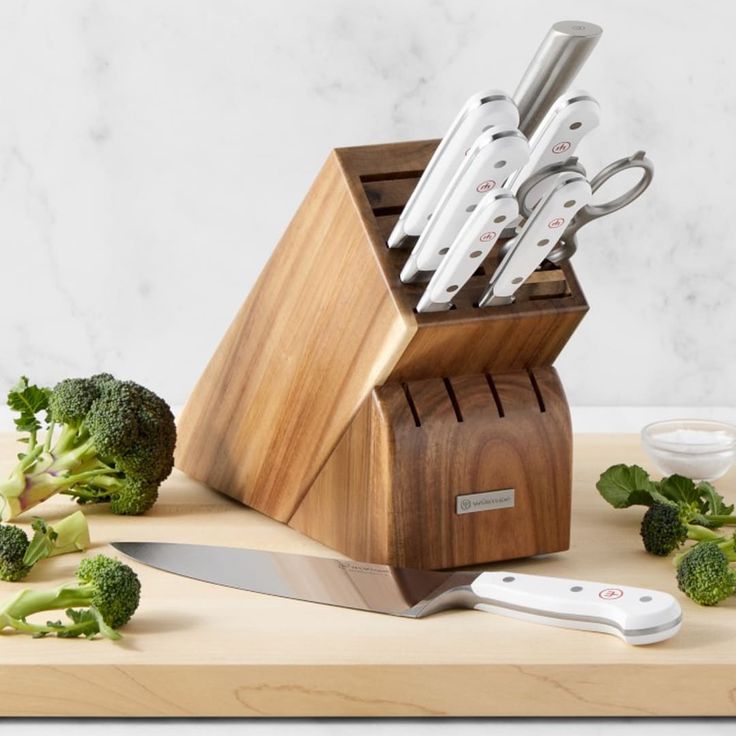
Maintenance Tips for Longevity
Investing in a quality kitchen knife block set requires a commitment to maintenance to ensure durability and performance. Adopting good knife care practices prevents the accumulation of damage over time and extends the life of your knives.
Regular Sharpening
Keeping knives sharp is undoubtedly one of the most critical aspects of maintenance. Establish a regular schedule for sharpening based on your usage. Use whetstones, honing rods, or professional sharpening services to keep blades in optimal condition. Remember, a sharp knife is safer and more effective than a dull one.
Proper Cleaning Techniques
Always clean knives immediately after use to prevent food residue from hardening. Handwash knives with warm, soapy water and dry them thoroughly with a soft cloth. Avoid putting knives in the dishwasher, as this can lead to chipping and dulling.
Knife Storage Practices
Storing your knives correctly helps maintain their sharpness and prevents accidents. Ensure each knife fits securely in its designated slot, and avoid overcrowding to prevent nicks and scratches. For those who opt for magnetic holders, ensure your knives do not clash against hard surfaces.
Regularly Inspecting Your Tools
Familiarize yourself with your knives and regularly inspect them for signs of wear or damage. Look out for chips, rust, or signs of a dull edge. Addressing minor issues promptly can prevent larger problems down the road, ensuring your knives retain their quality over time.
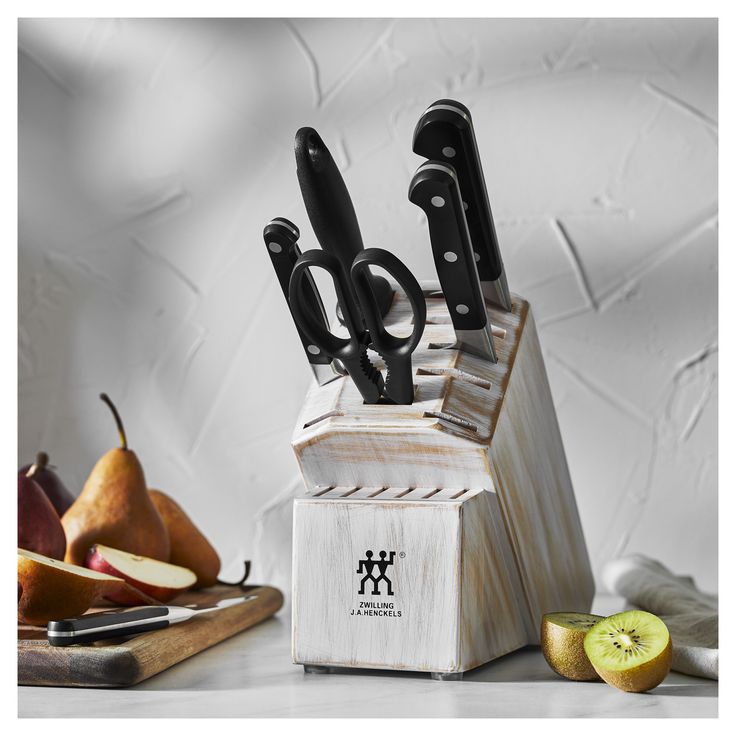
Conclusion: Empowering Your Culinary Journey
Choosing the right kitchen knife block set positions you for success in your culinary journey. By assessing your needs, understanding knife types, materials, and maintenance, you cultivate a kitchen environment that fosters creativity and efficiency. An ideal set enhances your cooking experience, promotes safety, and showcases your unique style.
Ultimately, invest time in selecting a kitchen knife block set that fits your lifestyle and culinary ambitions. Whether you prefer a classic wooden block or a sleek, modern design, finding a set that resonates with you elevates your kitchen experience. With the right tools at your disposal, you unlock the potential to explore new flavors, techniques, and culinary adventures—transforming each meal you prepare into a celebration of creativity and passion.
